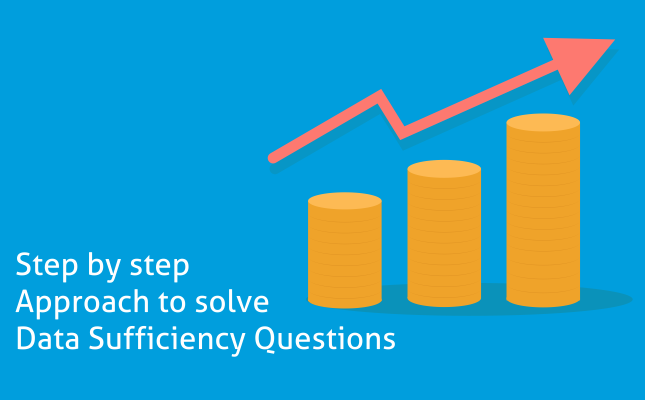
Data Sufficiency is a very important part of almost all the competitive exams, so you cannot take the risk of skipping it. Data Sufficiency uses direct and indirect knowledge of Mathematical concepts. In this article, we are going to discuss the approach we should follow while solving Data Sufficiency questions. Questions on Data Sufficiency are generally asked in the data interpretation section. Let us learn the concept and approach for solving Data Sufficiency questions.
Concept of Data Sufficiency:
How to answer Data Sufficiency questions?
Solved Data Sufficiency Questions
DIRECTIONS for the following questions:
Mark (1) if the question can be answered by A alone but cannot be answered by B alone
Mark (2) if the question can be answered by B alone but cannot be answered by A alone Mark (3) if the question cannot be answered by A or B alone but can be answered by combining the two statements. Mark (4) if the question can be answered by A alone and B alone Mark (5) if the question cannot be answered by A or B alone and cannot be answered even by combining the two statements.Example 1: What is the value of x?
Solution: Following the steps mentioned earlier, we see that statement A is not sufficient to answer the question as from statement A; we get 2 values of x as - 8 and + 8. Statement B is sufficient as we get x = 8.
As this is a unique solution, so the answer is 2nd option.Example 2: Is x odd?
Solution: If we follow the steps of solving a Data Sufficiency question, from statement A; we get the value of x as 8. This statement is sufficient to answer the question as we are getting a unique answer as "No".
Also from statement B; we get the value of x as 4. This statement is also sufficient to answer the question as we are getting a unique answer as "No". Since, we are getting unique answers from both statements individually, so the answer is 4th option.Example 3: What is the distance between Chandigarh and Delhi?
Solution: Just by looking at the statements, we can infer that a unique answer can be obtained by combining the two statements.
But, this answer is based on two assumptions: Chandigarh, Karnal and Delhi are in a straight line and Karnal lies between Chandigarh and Delhi. Even if it is given that these 3 cities are in straight line, still we have 2 possible answers to this question, even after combining the two statements i.e 250 km and 10 km. Since, we are not getting any unique answer even after combining the two statements, so answer is 5th option. Do remember these kinds of questions are traps to make you mark the wrong answer to the question.Key Learning
For any query about the topic or any other information, do write in the comment box given below.